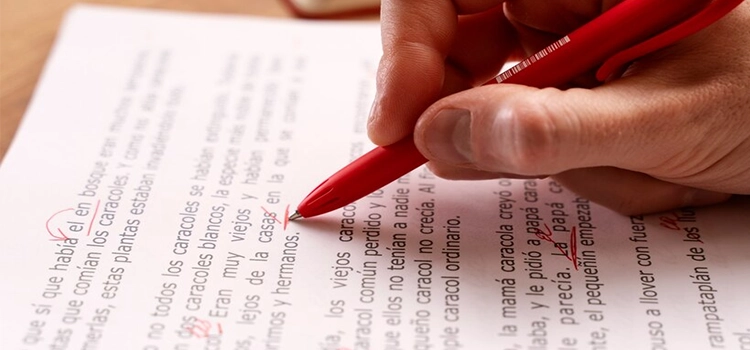Education and Training
11 Proofreading Tips That Can Help You Improve Your Book
When you have finally completed your manuscript, it can feel like you have aced the world. A burden feels like it has been lifted off your shoulders, and half of your worries will seem to disappear. But you have merely completed one milestone of a long journey.
The next big step is to proofread your work and see how it can be improved. You may already have revised your work a few times, but that does not mean that it cannot be improved any further. There is always room for improvement, and you have to believe it to see it.
Here are some amazing proofreading tips that you need to improve your book.
Table of Content
1. Take a Break
One of the biggest mistakes you can make is to start proofreading right after completing your manuscript. You may think that it is the best approach to start revising and editing your work when it is fresh in your mind. However, this approach can overwhelm you.
Instead of starting to proofread your work, take some time to appreciate yourself for achieving the milestone of writing the manuscript. This way, you can come back with fresh eyes and proofread your work more effectively.
2. Use a Spell Checker
Gone are the days when you only had to rely solely on your skills to perfect your work. Now, there are so many writing and editing apps that can help authors avoid basic mistakes that may risk their reputation as authors.
You can use these tools to check spelling throughout your manuscript. This way, you can prevent any embarrassing mistakes when it is too late to fix them.
3. Read Out Loud
Another great way of catching errors in your work is to read it out loud. It may sound like an unnecessary step but you will see its utility after you practise it. There are some mistakes that can only be caught when you hear them.
Some phrases or sentences may not look weird but you may figure something weird about them when you read them out loud. It can become your opportunity to make your manuscript more concise and engaging.
4. Neatly Divide Types of Errors
It is very easy for any proofreader to get overwhelmed when they are trying to improve a work holistically. You may miss many errors in effort to catch all errors at one time. The better approach is to only focus on one type of error at a time.
You can start proofreading by focusing on specific types of errors. For example, you can start with fixing the spelling, then move to grammar, then punctuation, and improve flow after that. This way, you will prevent missing any errors and also reduce the chances of being overwhelmed.
5. Analyse a Hardcopy
Reading your work on the screen can make you exhausted at times. As most authors and proofreaders look for errors in a manuscript on screen, reading it in hard copy form can make you notice the errors that you may have missed on screen.
Reading on paper can also give your eyes a break from the screen and help you highlight the common types of errors you may be repeating.
6. Pay Attention to Punctuation
Punctuation is a significant part of any language. The placement of different punctuation marks can completely change a sentence’s meaning. The consequences of wrong punctuation may be bigger than you may have perceived.
That is why you must pay special attention to punctuation in your book’s manuscript. If you are not completely confident about this aspect, it is always a good idea to hire a professional helping hand.
7. Hire a Professional Proofreader
As an author, one of the most important and hardest truths to acknowledge is that you cannot do everything by yourself. It is always a good idea to ask a professional for help in areas where you think you can benefit from it.
You can find local or freelance proofreaders who can help you improve your work. Discover proofreaders in the UK that fit your budget to help you improve your work. After all, a fresh pair of eyes can always make things better.
8. Check Formatting
The purpose of proofreading is not only fixing spelling errors and improving the flow of your work. Proofreading is also an opportunity for you to improve the formatting of your work by paying attention to the consistency of font, spacing, and indentation of your book.
Formatting your book the right way can also boost its readability and appeal to the readers to be attracted to your work.
9. Watch for Homophones
Homophones are words that sound the same but have different meanings and spellings. They can truly be a writer’s worst enemy. One example of this is the words “there,” “their,” and “they’re.” Its usage can be confusing and it is easy to miss out on it.
Although homophones may sound identical when spoken aloud, each of these words has a distinct definition and usage. Every author must pay special attention to homophones while proofreading their work. Being thorough while reading your manuscript is the only way to avoid these mistakes.
10. Keep the Style Guide in Mind
Whether you follow the APA guide or the Chicago Manual of Style for formatting, paying attention to ensuring that the guide has been followed can help you improve the readability and looks of your document.
In addition to formatting the flow of your document, following a style guide can also help you with citations in your work.
11. Trim Down Unnecessary Words
As readers revise and edit their work, they can improve their work at every go. In addition to making corrections to your work and improving your flow, you can also use this opportunity to cut down on unnecessary words from your manuscript.
This way, you can make your writing more concise and crisp for the readers. Further, your editor can also help you make your work more precise, and you can feel more prepared to publish your work.




